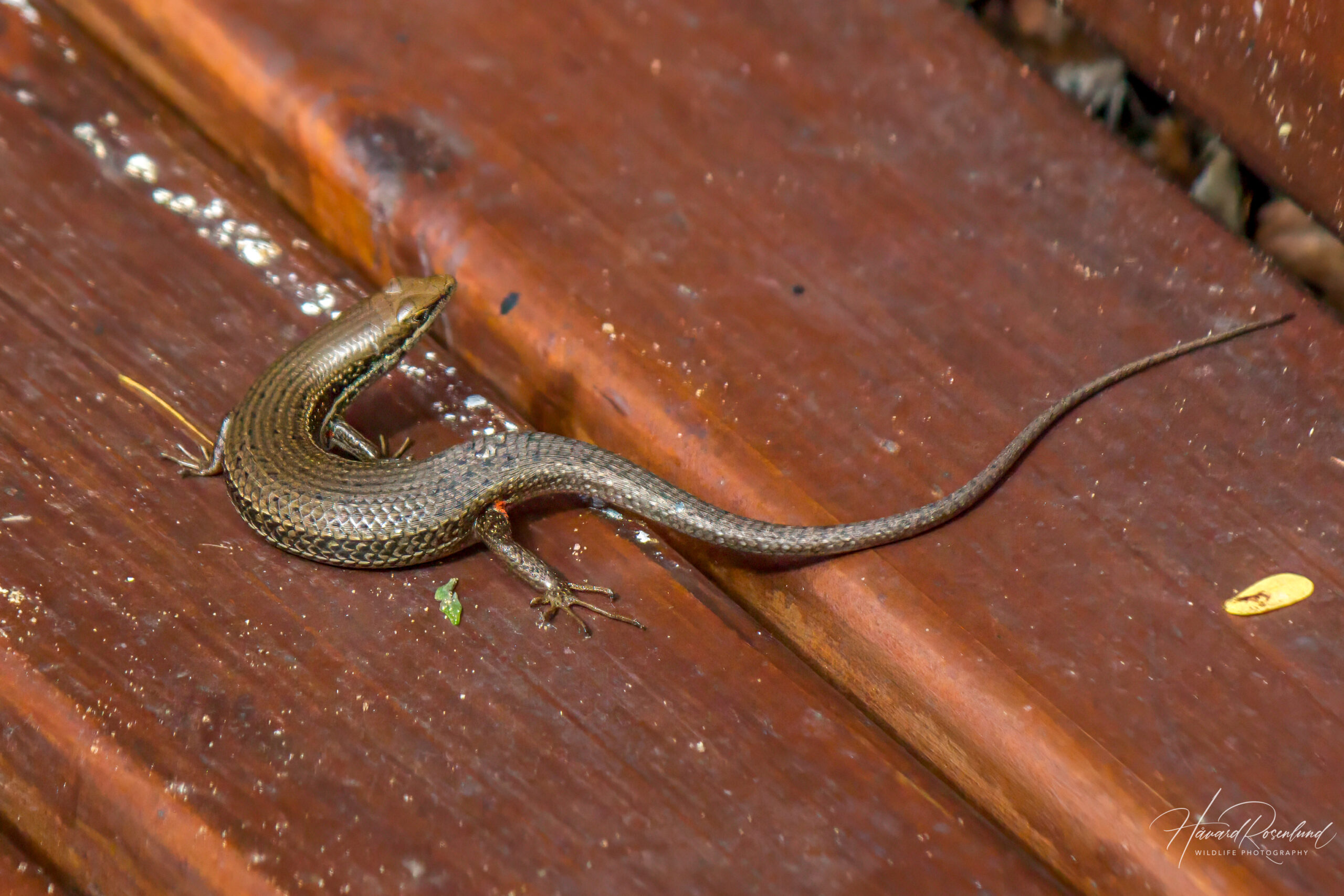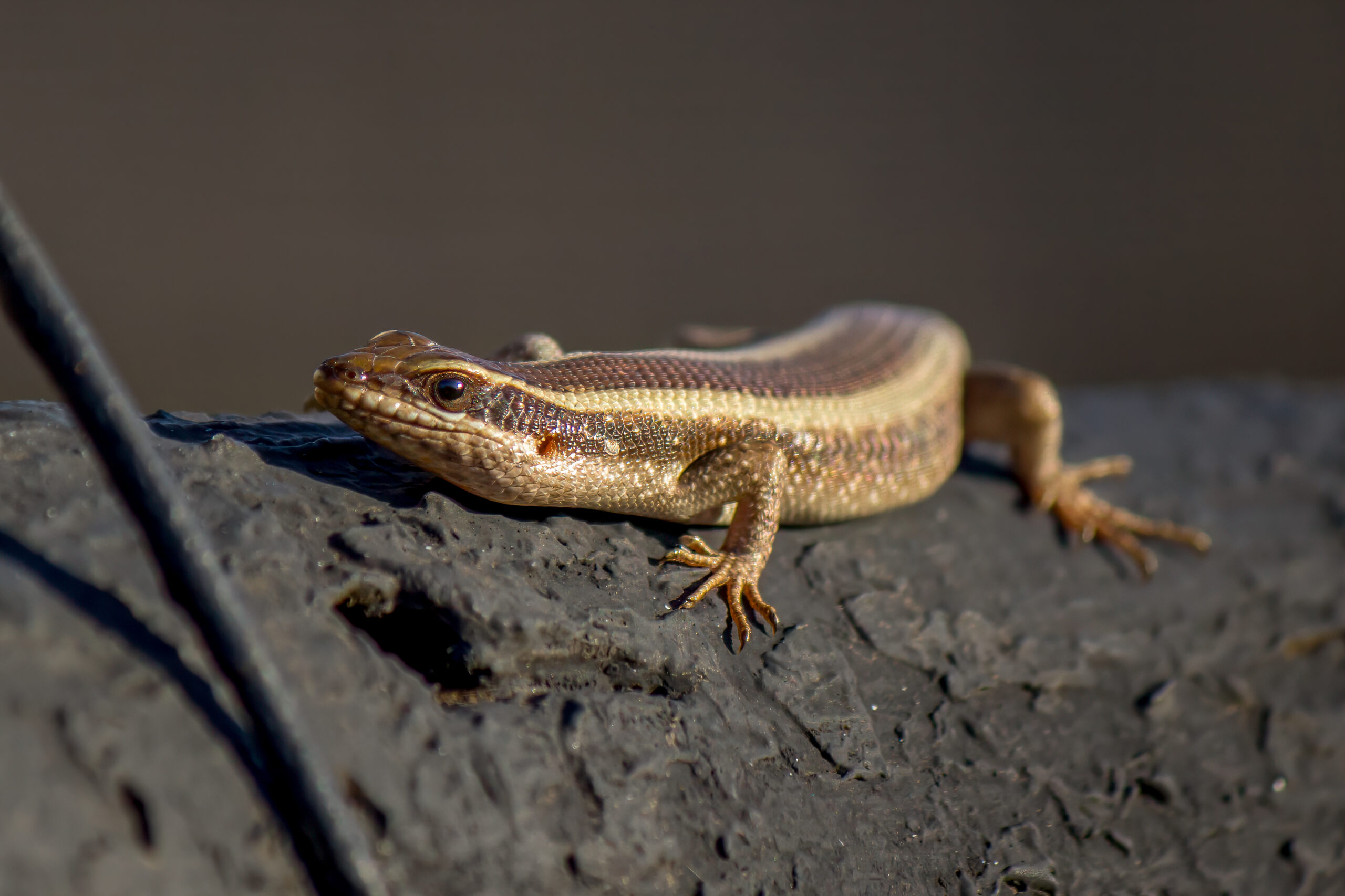Description
The eastern sand skink (Trachylepis depressa), also known as eastern coastal skink, is a species of skink found primarily in the southeastern regions of Africa. It is characterized by its sleek, elongated body and smooth scales, which aid in its burrowing lifestyle. Unlike some of its relatives, the eastern sand skink has a more subdued coloration, often displaying shades of brown, tan, or grey, which helps it blend into its sandy habitat. It has a few dark spots on its brown back, and a dark line along its side, separating back from a paler belly.
Diet & habitat
The eastern sand skink thrives in arid to semi-arid environments, particularly favoring sandy and loose-soiled areas where it can easily burrow. This habitat preference is closely linked to its diet, which mainly consists of small invertebrates like insects and spiders. The skink employs a “sit-and-wait” strategy for feeding, where it remains partially buried in sand, waiting to ambush its prey. This hunting technique is quite efficient in the sparse vegetation of its habitat.
Reproduction
The breeding season of the eastern sand skink typically aligns with the onset of the wet season, when food resources are more abundant. These skinks are oviparous, meaning they lay eggs. The female skink lays a clutch of eggs in a secure, hidden location, often within the sand or under rocks. The incubation period can vary based on environmental conditions but generally lasts several weeks. Hatchlings are independent from birth and quickly adapt to their environment.
Status
The eastern sand skink has a stable population, and is not deemed threatened. It is listed as least concern on the IUCN Red List.





